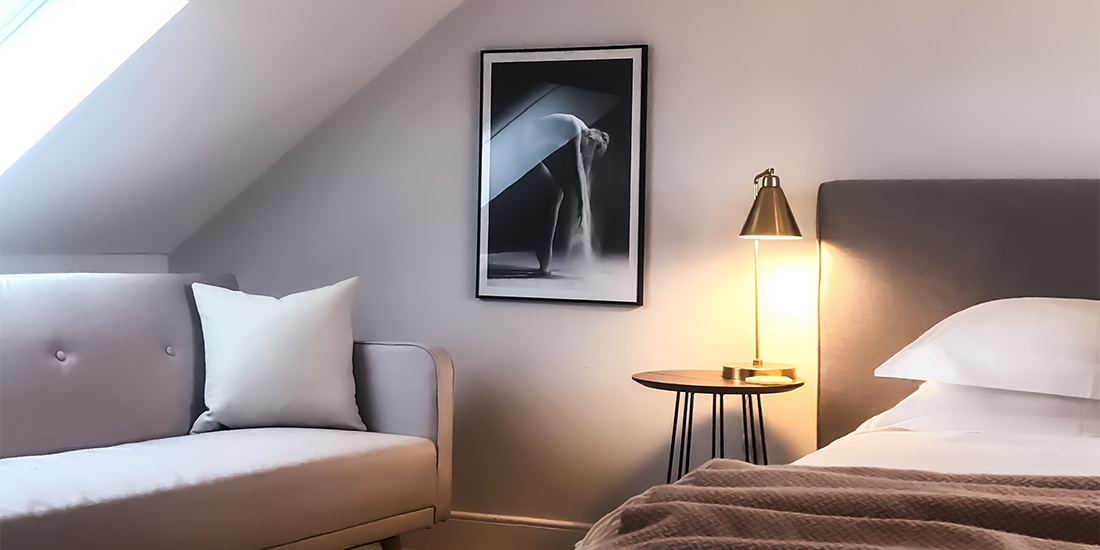
Q: My house has a spare bedroom I mostly use for impromptu storage. I’m thinking about turning it into a rental property. What do I need to know up front?
A: Good question! An attached accessory dwelling unit (AADU) is a residential unit inside an existing single-family home or townhouse that functions as a separate residence. AADUs are a great way to bring in rental income but have a lot of other benefits as well—they increase housing stock in neighborhoods that need it, create equity for first-time homebuyers purchasing them, and they provide housing options for aging parents or college-age children.
In June of this year, the Seattle City Council enacted legislation that makes accessory dwelling units (ADUs)—both attached and detached—considerably more practical. The new policy allows up to two ADUs on a single property and eliminates additional parking and owner occupancy requirements.
In short, Seattle has made it relatively easy to legally convert an old garage, spare bedroom, or attic space into an AADU. So, what does the process look like?
Get Acquainted With the Rules
AADUs are limited to 1,000 square feet in single-family zones and 650 in low-rise zones. Each unit must include a separate lockable entry door; living, kitchen, and sleeping spaces; and bathroom.
For fire and safety purposes, the AADU must have at least one exterior door or operable window large enough for a resident to use in case of an emergency. The city of Seattle considers AADUs to be second residences, so walls must also provide sound and fire separation. These are just a few of the rules. You can find a more comprehensive rundown here.
Get Your Funding and Design Ducks in a Row
If you’re borrowing money, it’s best to start the pre-loan approval process as soon as possible since it can take considerable time. Meanwhile, start developing your AADU design. You can do it yourself (provided you’re ready to navigate all the regulatory hoops) or hire an expert to prepare the design—there are design and architectural firms that specialize in AADU projects and can bring a lot of experience to the process.
Contact the City
Get the approval process rolling by contacting your city government’s permitting department. For the purposes of this article, you’ll want to contact the Seattle Department of Construction & Inspections by submitting an application and site plan online. The city will then set up a Seattle Services Portal account for your project and contact you to set up an in-person intake appointment.
Assemble the Necessary Documents and Complete Permit Application
At this point, you’ll need to create detailed site/floor plans and structural plans and upload them to the city’s portal. Once the application materials are complete, you’ve had your intake appointment, and you’ve paid your permit intake and application fees, the city will review your permit application. It’s possible they will request more information or corrections. Once you’re approved, you’re ready to go.
Hire Your Contractors, Line Up Your Funding, and Start Building!
Once you have the go-ahead, it’s time to get started. If your project requires an architect or a contractor, seek out reputable candidates, interview and conduct site visits as needed to determine the best fit, and make your selection.
Make sure you get a detailed bid that accounts for every aspect of the project as this will help head off any unexpected setbacks or cost overruns. If you initiated the pre-loan approval early in the process, congratulations! You are now much better positioned to arrange your financing. Now you’ll need to create a detailed construction contract and, once that’s in order, it’s time to build!
Note that the city of Seattle will require inspections throughout the process and you’ll be responsible for scheduling them using the city’s portal.
In Conclusion
This is a very simple summary and you’ll want to do a lot more research before you begin. The long and the short of it is converting part of your home into an AADU is not as simple as installing some shelves, furniture, and fixtures. It takes planning, hard work, and dedication from start to finish. On the plus side, the investment will pay for itself once your new residents move in and you’ll have done your part adding vital housing stock to the city.
James Slone is a writer for Master Builders of King and Snohomish Counties (MBAKS). If you have a home improvement, remodeling, or residential homebuilding question you’d like answered by one of MBAKS’ nearly 2,800 members, write to homework@mbaks.com.